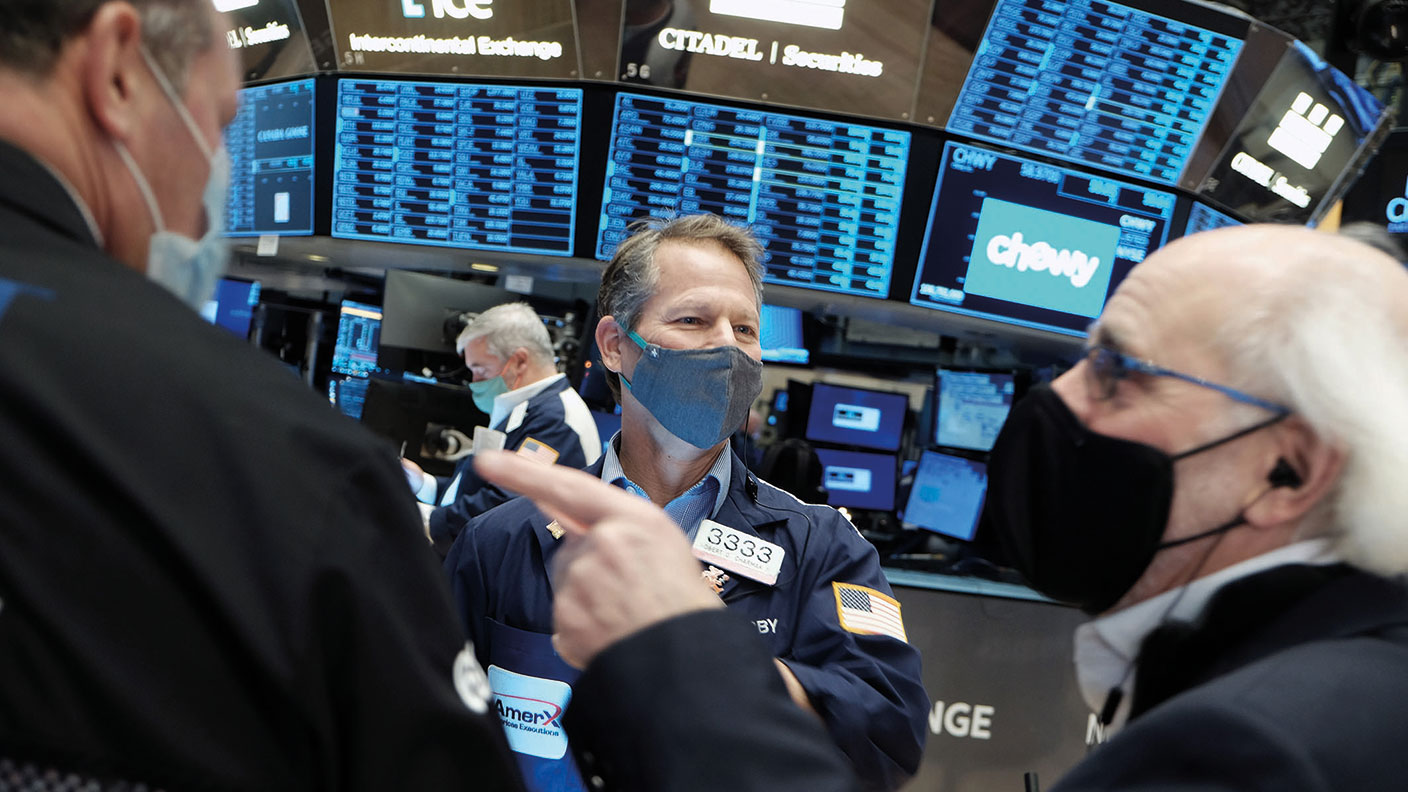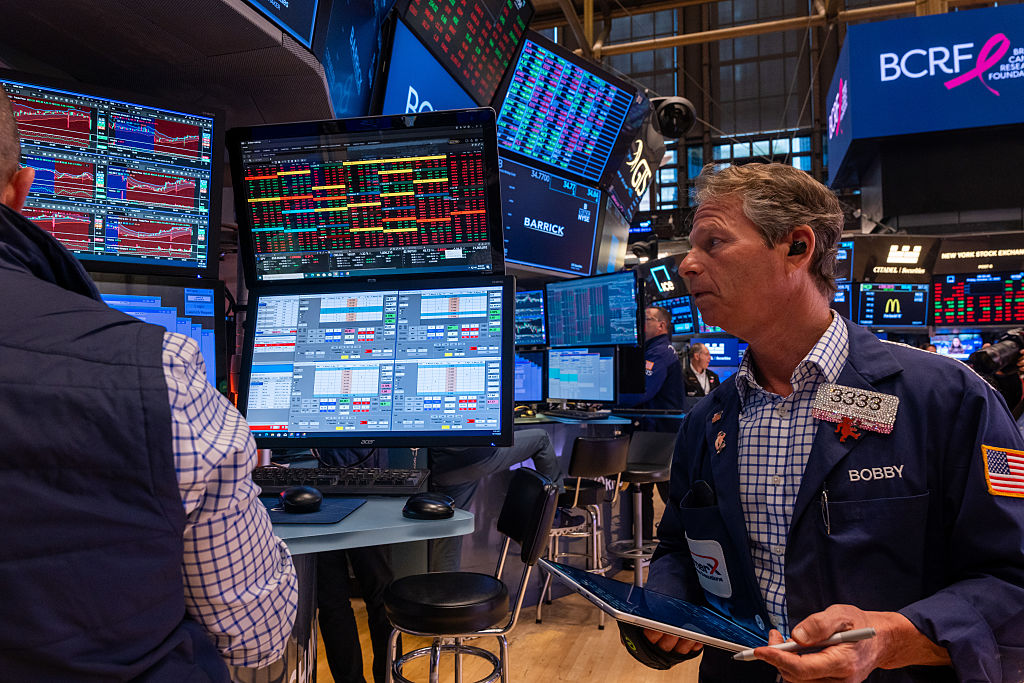Tech stocks teeter as US Treasury bond yields rise
The realisation that central banks are about to tighten their monetary policies caused a sell-off in the tech-heavy Nasdaq stock index and the biggest rise in US Treasury bond yields since 2019.

Expect 2022 to be “a year of policy tightening”, says Andrew Sheets of Morgan Stanley. This time last year, investors thought America’s Federal Reserve wouldn’t raise interest rates until April 2024. As recently as last August, market pricing still implied that “liftoff” wouldn’t come until April 2023. Yet with inflation soaring, the Fed has been forced to take a more hawkish stance. Traders are now expecting the first rise as soon as this March.
Bond yields spike
The dawning realisation that money is about to get tighter caused the biggest weekly sell-off (and resulting rise in yields) in the US ten-year Treasury bond since 2019. The yield on the ten-year Treasury topped 1.8% on Monday, a level not seen since before the pandemic began, and up from less than 1.25% in August. Meanwhile, the yield on the German ten-year Bund has come within spitting distance of zero. Germany’s benchmark bond has had a negative yield for almost three years, meaning investors have effectively been paying the government for the privilege of lending it money. That strange state of affairs may not last much longer.
Higher yields are likely to be bad news for popular growth stocks, including many fashionable firms in the tech sector. When interest rates are low investors are happy to take punts on unprofitable, fast-growing businesses that they hope will reap rewards in the future. Conversely, better bond yields may tempt some to take advantage of safer returns in the here and now instead.
MoneyWeek
Subscribe to MoneyWeek today and get your first six magazine issues absolutely FREE

Sign up to Money Morning
Don't miss the latest investment and personal finances news, market analysis, plus money-saving tips with our free twice-daily newsletter
Don't miss the latest investment and personal finances news, market analysis, plus money-saving tips with our free twice-daily newsletter
Tech stocks have been especially spooked by hints that the Fed is examining how to reduce its $9trn balance sheet (ie, putting quantitative easing into reverse), says Katie Martin in the Financial Times. On Monday, the tech-heavy Nasdaq index briefly entered correction territory, after falling 10% from its last peak in November.
A stronger economy
“Rising yields aren’t all bad news,” says Sam Goldfarb in The Wall Street Journal. Higher yields on long-term debt may signal that investors feel positive about the economy. Indeed, as tech sold off, shares “in economically sensitive sectors such as banking, industrials and energy generally rose”. US financial stocks have had their “best five-day start to a year since 2010”.
Nonetheless, the S&P 500 has fallen more than 2% since the start of the month, reflecting how big an impact the tech sector now has on its performance. US stocks have beaten the rest of the world for four years running, says Joe Wallace in The Wall Street Journal. Last year the MSCI USA index did 19 percentage points better than the rest of the world in dollar terms , the biggest margin of victory since 1997.
Yet with Apple’s value now comparable to that of the entire UK FTSE 100 index, some analysts question whether the outperformance can continue – especially if the US Federal Reserve raises interest rates faster than many other central banks this year. The challenge for US policymakers will be to tighten policy through “baby steps” without prompting the market to “throw its toys out of the pram”, says Mark Dowding of BlueBay Asset Management.
Get the latest financial news, insights and expert analysis from our award-winning MoneyWeek team, to help you understand what really matters when it comes to your finances.
Alex is an investment writer who has been contributing to MoneyWeek since 2015. He has been the magazine’s markets editor since 2019.
Alex has a passion for demystifying the often arcane world of finance for a general readership. While financial media tends to focus compulsively on the latest trend, the best opportunities can lie forgotten elsewhere.
He is especially interested in European equities – where his fluent French helps him to cover the continent’s largest bourse – and emerging markets, where his experience living in Beijing, and conversational Chinese, prove useful.
Hailing from Leeds, he studied Philosophy, Politics and Economics at the University of Oxford. He also holds a Master of Public Health from the University of Manchester.
-
 Christopher Harborne: Reform UK donor and crypto billionaire
Christopher Harborne: Reform UK donor and crypto billionaireChristopher Harborne came into the spotlight when it emerged he had given £9 million to Nigel Farage's Reform UK. How did he make his millions?
-
 Reeves's business rates hike will crush the British economy
Reeves's business rates hike will crush the British economyOpinion By piling more and more stealth taxes onto businesses, the government is repeating exactly the same mistake of its first Budget, says Matthew Lynn
-
 Who is Christopher Harborne, crypto billionaire and Reform UK’s new mega-donor?
Who is Christopher Harborne, crypto billionaire and Reform UK’s new mega-donor?Christopher Harborne came into the spotlight when it emerged he had given £9 million to Nigel Farage's Reform UK. How did he make his millions?
-
 The best Christmas gifts for your loved ones
The best Christmas gifts for your loved onesWe round up the best Christmas gifts with a touch of luxury to delight, surprise and amaze family and friends this festive season
-
 The top stocks of 2025 - did you pick a winner?
The top stocks of 2025 - did you pick a winner?As a chaotic year in the stock market draws to a close, we review which stocks were investors’ top picks for 2025
-
 Leading European companies offer long-term growth prospects
Leading European companies offer long-term growth prospectsOpinion Alexander Darwall, lead portfolio manager, European Opportunities Trust, picks three European companies where he'd put his money
-
 How to harness the power of dividends
How to harness the power of dividendsDividends went out of style in the pandemic. It’s great to see them back, says Rupert Hargreaves
-
 Why Trustpilot is a stock to watch for exposure to the e-commerce market
Why Trustpilot is a stock to watch for exposure to the e-commerce marketTrustpilot has built a defensible position in one of the most critical areas of the internet: the infrastructure of trust, says Jamie Ward
-
 Tetragon Financial: An exotic investment trust producing stellar returns
Tetragon Financial: An exotic investment trust producing stellar returnsTetragon Financial has performed very well, but it won't appeal to most investors – there are clear reasons for the huge discount, says Rupert Hargreaves
-
 How to capitalise on the pessimism around Britain's stock market
How to capitalise on the pessimism around Britain's stock marketOpinion There was little in the Budget to prop up Britain's stock market, but opportunities are hiding in plain sight. Investors should take advantage while they can